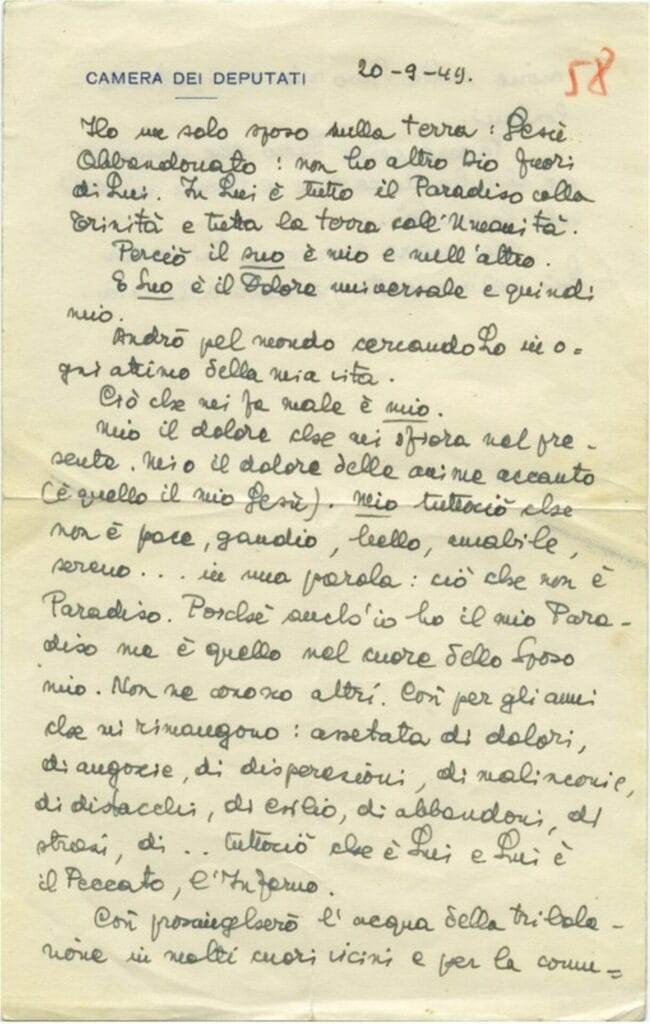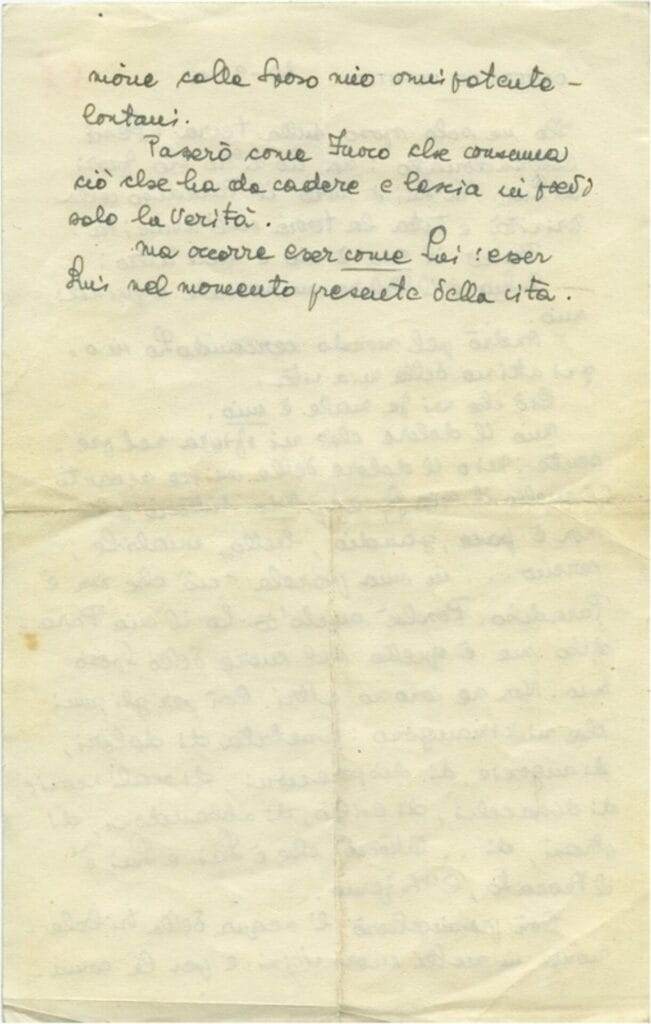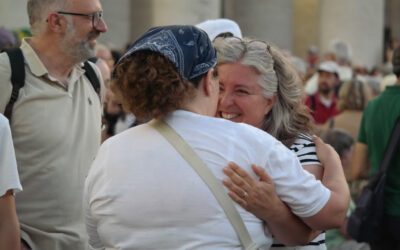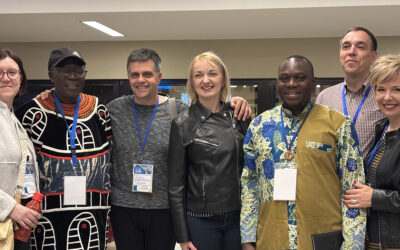Seventy-five years have passed since the day Chiara Lubich wrote “I have only one spouse on earth”, which we have reproduced here. It’s a writing destined from the very beginning to become a true programmatic manifesto for Chiara and for those who would follow her by adopting the spirituality of unity as their own.
The handwritten manuscript, preserved in the Chiara Lubich Archive (in GAFM) and written on the front and back of a single sheet, records the date of its composition: 20-9-49. Published, in Italian, for the first time in 1957, in an incomplete version and with some modifications, in the magazine “Città Nuova”, it was then reprinted in other publications of Chiara Lubich’s writings, until it was finally included, in its entirety, and according to the original manuscript, in The Cry (New City, London 2001). This is a book that Chiara Lubich wanted to write personally “as a love song” dedicated precisely to Jesus Forsaken.
It began as a sort of diary page, written on the spur of the moment. Considering the unique lyrical tone that permeates it, it could be defined as a “sacred hymn”. This definition seems appropriate if one considers that the term “hymn” originates from the Greek hymnos. The word, although of uncertain etymology, has nevertheless a close relationship with the ancient Hymēn, the Greek god of marriage in whose honour it was sung. Moreover, the spousal aspect in this work is more than ever present, even if – and precisely because – we are within a strongly mystical context. It really is a “song” of love to Jesus Forsaken.
The context of the writing takes us back to the summer of 1949, when Chiara, with her first companions, and the first two men focolarini, was in the mountains – in the Primiero valley, in Trentino-Alto Adige – on holiday. Also, Igino Giordani (Foco) joined the group, for a few days. He had already met Chiara in Parliament a short time before, in September 1948, and he had been fascinated by her Charism.
It was a summer that Chiara herself described as “full of light”. Since then – going back over its stages – she did not hesitate to affirm that it was precisely in that period that she had a better understanding of “many truths of the faith, particularly who Jesus Forsaken was for humanity and for creation – he who recapitulated all things in Himself. Our experience was so powerful,” she noted, “it made us think life would always be like that: light and Heaven.” (The Cry, pages 60-61). But the time had come – urged precisely by Foco – to “come down from the mountains” to meet humanity that is suffering, and to embrace Jesus Forsaken in every expression of pain, in every “abandonment”. Like Him. Only out of love.
So, she wrote: “I have only one spouse on earth: Jesus Forsaken”.
Maria Caterina Atzori


20-9-49
I have only one Spouse on earth: Jesus forsaken. I have no God but him. In him is the whole of paradise with the Trinity and the whole of the earth with humanity.
Therefore, what is his is mine, and nothing else.
And his is universal suffering, and therefore mine.
I will go through the world seeking it in every instant of my life.
What hurts me is mine.
Mine the suffering that grazes me in the present. Mine the suffering of the souls beside me (that is my Jesus). Mine all that is not peace, not joy, not beautiful, not lovable, not serene, in a word, what is not paradise. Because I too have my paradise, but it is that in my Spouse’s heart. I know no other. So it will be for the years I have left: athirst for suffering, anguish, despair, sorrow, exile, forsakenness, torment— for all that is him, and he is sin, hell.
In this way I will dry up the waters of tribulation in many hearts nearby and, through communion with my almighty Spouse, in many faraway.
I shall pass as a fire that consumes all that must fall and leaves standing only the truth.
But it is necessary to be like him: to be him in the present moment of life.
Chiara Lubich
The Cry (New City, London 2001, pages 61-62)
Source: https://chiaralubich.org/




0 Comments